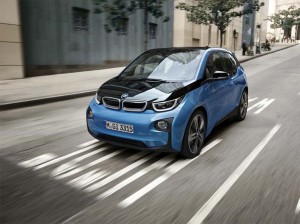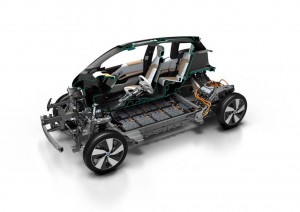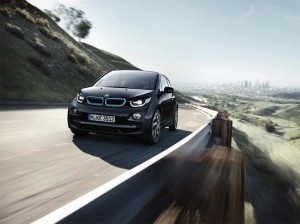BMW is the latest automaker hoping to charge up the sluggish battery-car market by boosting the range of its little electric city car, the i3.
While the 2017 model won’t match the range of the new Chevrolet Bolt or upcoming Tesla Model 3, BMW claims it will still deliver up to 114 miles per charge, or 58% more driving distance thanks to a larger lithium-ion battery. That jumps to more than 200 miles if you order a 2017 BMW i3 equipped with the optional, range-extending two-cylinder gas engine – the update model also getting a larger fuel tank.
Though performance numbers won’t change for the upcoming model-year, the BMW i3 will remain one of the market’s quicker battery-electric vehicles, or BEVs, launching from 0 to 60 in just 7.2 seconds.
The original version of the BMW i3 debuted with a relatively modest 21.8 kilowatt-hour, or 60 amp-hour, lithium battery. The new pack manages to store 33 kWh, or 94 Ah. That’s enough for 114 miles in the U.S. combined city/highway driving cycle.
(Ford planning long-range EV to challenge Tesla Model 3, Chevy Bolt. Click Here for more.)
“The high-voltage battery also has an advanced thermal management system that keeps the battery operating in the optimal temperature range, which further enhances performance,” BMW notes.
Significantly, the new battery underscores the increasingly quick pace of development in lithium-ion technology, the 33 kWh pack fitting into the same physical space as the smaller batteries used initially.
Better yet, BMW says it will allow owners of early i3 city cars to upgrade to the new battery pack if they’d like to increase their range. No pricing details for the 2017 BMW i3 or the battery pack upgrade have yet been announced, however.
The German maker also says it is enhancing the Home Charger Connect system to add more “comfort and connected functions” for 2017.
One of the more unusual features of the BMW i3 is the ability to add a range-extending gasoline engine which turns it into an extended-range electric vehicle along the lines of the Chevrolet Volt. That two-cylinder engine only fires up when the batteries are running out of power. And unlike most plug-in hybrids, the gas engine acts only as a generator. None of its torque is used to directly power the wheels of the i3.
(Reborn Fisker, now Karma, set to build battery car in the U.S. Click Here for the story.)
Most drivers appear to be ordering the pure battery model, however. One of the advantages the BMW i3 has over a number of other first-generation battery-cars is the ability to hook up to a Level 3 quick charger. That means an additional 80% of its range in less than 30 minutes.
Industry officials have long argued that 100 miles or so of range is more than enough for the vast majority of both European and American motorists to commute and run errands. But that hasn’t done much to overcome consumer range anxiety.
As a result, manufacturers appear to be shifting to a new generation of larger, higher-density battery packs that will be able to boost range to 200 miles or more. The first vehicle to meet that target was the Tesla Model S, but its hefty price tag put it out of reach of most consumers.
That’s expected to change soon, with Chevy launching the 200-mile Bolt for 2017 and Tesla promising to get the Model 3 into production by late next year. Ford CEO Mark Fields last week revealed that maker is developing a longer-range BEV. And Nissan, which this year jumped to more than 100 miles with the Leaf, is expected to push into 200-mile territory with the second generation of that model, as well.
For those who need relatively modest range, BMW says it will continue to offer the older battery pack for the i3 next year, along with the longer-range model.
(Little Dubai wants to become a world leader in autonomous vehicles. Click Here to see how.)



